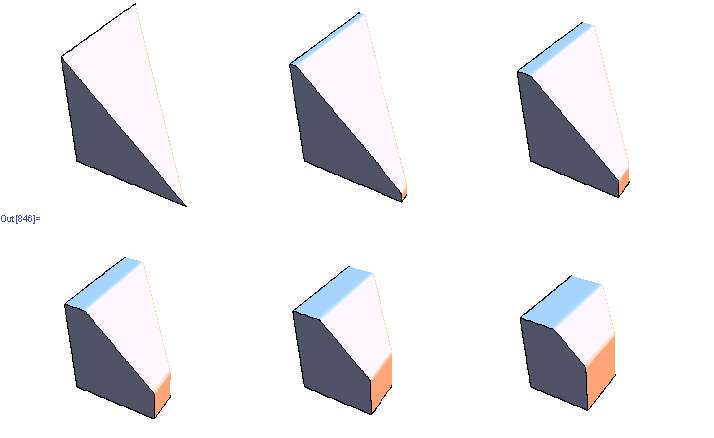http://www.yaroslavvb.com/research/qr/doubly-stochastic/doubly-stochastic.html
As Jeremy pointed out, Birkhoff's theorem provides necessary and sufficient conditions for a matrix to be doubly stochastic -- it must be a convex combination of permutation matrices. It seems hard to sample from the set of valid convex combinations though. For instance, here's a set of 3 dimensional slices through the set of valid convex combinations for 3x3 matrices (there are 6 permutation matrices, so the space is 5 dimensional).

Update: here's the updated notebook with 2 more algorithms, suggested by Dr.Teh and Jeremy below. Turns out that sampling random convex combinations is fairly easy -- almost all the time uniformly sampled convex combination will produce a doubly-stochastic matrix. However, matrices end up looking pretty uniform
http://www.yaroslavvb.com/research/qr/doubly-stochastic/doubly-stochastic3.html
Your second approach reminds me of the following theorem (taken from Combinatorial Matrix Theory by Brualdi and Ryser):
ReplyDeleteA matrix A is doubly stochastic iff there exists permutation matrices P_1, ..., P_t and real numbers c_1, ... , c_t such that
A = c_1 P_1 + ... + c_t P_t
and
c_1 + ... + c_t = 1.
I have a question: why won't iteratively normalizing columns and rows work? Isn't it IPF? cheers, -yw
ReplyDeleteJeremy -- thanks for the pointer. I also found it as Thm. 8.7.1 in Horn and Johnson
ReplyDeleteDr Teh -- you are right, it's IPF, I made a mistake of running it for too few iterations, if I run it longer it tends to converge (within 10^-10 of doubly stochastic) after 30 iterations for 3x3 matrices, less for larger matrices
http://www.yaroslavvb.com/research/qr/doubly-stochastic/doubly-stochastic2.html
In fact, convergence of IPF to doubly-stochastic matrix was proven back in 1964
ReplyDelete(convergence is guaranteed only if all matrix entries are strictly positive)
ReplyDeleteIsn't this simpler and equivalent? In Matlab notation: [T,~]=qr(rand(n));T=T.^2;
ReplyDelete
ReplyDeleteExcellent machine learning blog,thanks for sharing...
Seo Internship in Bangalore
Smo Internship in Bangalore
Digital Marketing Internship Program in Bangalore
Great Article
ReplyDeleteIEEE final year projects on machine learning
JavaScript Training in Chennai
Final Year Project Centers in Chennai
JavaScript Training in Chennai
Great Article
ReplyDeleteIEEE final year projects on machine learning
JavaScript Training in Chennai
Final Year Project Centers in Chennai
JavaScript Training in Chennai
Thankjob for this fantastic post
ReplyDeleteKeep up the great work, good ones are hard to find.
ReplyDeleteIt was certainly helpful. your website is very helpful.
ReplyDeleteThis is a wonderful work we wish you success and excellence and thank you
ReplyDelete